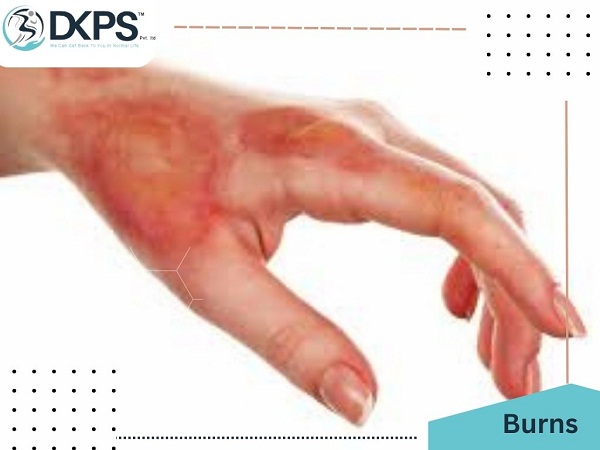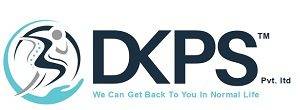- Home
- About Us
- DKPS Dealing
- BLOG
- Delhi NCR
- Delhi
- Physiotherapy at Home Near Me | Physiotherapist in South Delhi
- Best Chiropractor in Delhi
- Physiotherapist in Delhi
- Cupping Therapy in Delhi
- Home Nursing Services in Delhi
- Needle Therapy for Back Pain
- Sports Injury Physiotherapy
- Best Physiotherapist Visit at Home in Rohini Sector 24
- Physiotherapy at Home In Rohini Sector 9 |
- Physiotherapist in Pitampura | Physiotherapy at Home in Pitampura
- Physiotherapy at home in Rohini sector 29
- Physiotherapist in Paschim Vihar
- Physio home visit | Home Visit Physiotherapy |
- Physiotherapist in Saket | Best Physiotherapist in Saket |
- Physiotherapist In Janakpuri | Best Physiotherapist in Janakpuri |
- Best Physiotherapist in Punjabi Bagh | Punjabi Bagh Physiotherapist |
- Best Physiotherapist Service at Home in Dwarka, Delhi
- Best Physiotherapist in Chandigarh at Home Visit
- Faridabad
- Gurugram
- Noida
- Best Physiotherapy Gorakhpur
- Best Physiotherapist in Lucknow | Physiotherapist in Lucknow near me |
- Delhi
- Mumbai
- Delhi NCR
- Department
- Doctors
- Gallery
- Packages
- Contact Us
- Home
- About Us
- DKPS Dealing
- BLOG
- Delhi NCR
- Delhi
- Physiotherapy at Home Near Me | Physiotherapist in South Delhi
- Best Chiropractor in Delhi
- Physiotherapist in Delhi
- Cupping Therapy in Delhi
- Home Nursing Services in Delhi
- Needle Therapy for Back Pain
- Sports Injury Physiotherapy
- Best Physiotherapist Visit at Home in Rohini Sector 24
- Physiotherapy at Home In Rohini Sector 9 |
- Physiotherapist in Pitampura | Physiotherapy at Home in Pitampura
- Physiotherapy at home in Rohini sector 29
- Physiotherapist in Paschim Vihar
- Physio home visit | Home Visit Physiotherapy |
- Physiotherapist in Saket | Best Physiotherapist in Saket |
- Physiotherapist In Janakpuri | Best Physiotherapist in Janakpuri |
- Best Physiotherapist in Punjabi Bagh | Punjabi Bagh Physiotherapist |
- Best Physiotherapist Service at Home in Dwarka, Delhi
- Best Physiotherapist in Chandigarh at Home Visit
- Faridabad
- Gurugram
- Noida
- Best Physiotherapy Gorakhpur
- Best Physiotherapist in Lucknow | Physiotherapist in Lucknow near me |
- Delhi
- Mumbai
- Delhi NCR
- Department
- Doctors
- Gallery
- Packages
- Contact Us
Burns
- Home
- Burns

BURNS
Burns are a common injury that can occur at home, at work, or in a variety of other settings. They can range in severity from minor burns that heal quickly to life-threatening burns that require extensive medical intervention. In this article, we will discuss the different types of burns, their causes, symptoms, treatment, and prevention.
Types of Burns:
There are three primary types of burns: first-degree burns, second-degree burns, and third-degree burns.
First-Degree Burns: These are the mildest type of burns, and they only affect the outer layer of the skin. Symptoms include pain, redness, and minor swelling. These burns typically heal within a few days to a week without scarring.
Second-Degree Burns: These burns affect the outer and second layers of the skin, and they can cause blistering, swelling, and severe pain. These burns can take several weeks to heal, and they may leave scars.
Third-Degree Burns: These are the most severe type of burns, and they affect all layers of the skin. They can cause extensive tissue damage, nerve damage, and scarring. Third-degree burns require immediate medical attention, and they may require surgery or skin grafts to heal.
Causes of Burns:
Burns can be caused by a variety of factors, including:
Heat: Burns caused by heat sources such as flames, hot liquids, steam, and hot surfaces are the most common type of burns.
Chemicals: Burns can also be caused by exposure to chemicals such as acids, alkalis, and detergents.
Electrical: Electrical burns occur when the body comes into contact with an electrical current, which can cause tissue damage and other complications.
Radiation: Burns can also be caused by exposure to radiation from sources such as the sun, tanning beds, or medical treatments.
Symptoms of Burns:
The symptoms of burns can vary depending on the severity of the burn. Common symptoms include:
Pain: Burns can cause varying degrees of pain, from mild discomfort to severe, debilitating pain.
Redness: Burns can cause the affected area to become red and inflamed.
Swelling: Burns can cause swelling in the affected area.
Blisters: Second-degree burns can cause blisters to form on the skin.
Skin Changes: Burns can cause the skin to become dry, cracked, or peeling.
Shock: Severe burns can cause shock, which can lead to symptoms such as low blood pressure, rapid heartbeat, and shallow breathing.
Treatment of Burns:
The treatment of burns depends on the severity of the burn. In general, first-degree and minor second-degree burns can be treated at home with first aid measures. More severe burns require medical attention.
First Aid for Minor Burns: For first-degree burns and minor second-degree burns, the following first aid measures can be taken:
Cool the burn with cool running water or a cool, wet compress for 10-15 minutes.
Cover the burn with a sterile, non-adhesive bandage or clean cloth.
Take over-the-counter pain medication such as ibuprofen or acetaminophen to reduce pain and inflammation.
Avoid breaking blisters, as this can increase the risk of infection.
Keep the burn clean and dry.
Medical Treatment for Severe Burns: Severe burns require immediate medical attention. The following treatments may be used:
Intravenous fluids to prevent dehydration.
Antibiotics to prevent infection.
Pain medication to manage pain.
Wound care, which may include cleaning the wound, removing dead tissue, and applying a dressing or bandage.
Skin grafts or other surgical procedures repair the damage caused by the burn.
Prevention of Burns:
Preventing burns is essential, and there are several steps you can take to reduce your risk of getting burned:
Practice Fire Safety: Keep flammable materials away from heat sources and always supervise children around open flames or hot surfaces.
Use Caution When Cooking: Use caution when cooking, and keep pot handles turned inward to prevent accidental spills.
Be Careful with Hot Liquids: Use caution when handling hot liquids, such as coffee or tea. Always use a lid to prevent spills, and allow hot liquids to cool before drinking.
Use Protective Clothing: Wear protective clothing, such as gloves or aprons, when working with hot surfaces or chemicals.
Avoid Exposure to Radiation: Protect yourself from exposure to radiation by wearing protective clothing and avoiding unnecessary exposure to the sun or tanning beds.
Keep Chemicals Out of Reach: Keep chemicals and other hazardous materials out of reach of children and pets.
Electrical Safety: Practice electrical safety by using surge protectors, avoiding overloading electrical outlets, and turning off electrical appliances when not in use.
Conclusion:
Burns can cause pain, discomfort, and scarring. They can also be life-threatening in severe cases. It is essential to take steps to prevent burns and to seek medical attention if you experience a burn. With proper treatment and care, most burns can be managed effectively, and the risk of complications can be reduced. Remember to practice fire safety, use caution when cooking or handling hot liquids, and keep hazardous materials out of reach to reduce your risk of getting burned.
How DKPS physiotherapy can help in Burns
Physiotherapy can play an important role in the rehabilitation of individuals with burn injuries. Burn injuries can cause physical limitations, including reduced range of motion, loss of strength, and impaired functional mobility. Physiotherapy can help individuals with burn injuries regain their mobility and function and can help reduce the risk of complications such as contractures and scars.
Here are some ways that physiotherapy can help individuals with burn injuries:
Wound Care by DKPS Physiotherapy: Physiotherapists are trained to provide wound care to individuals with burn injuries. They can assess the wound, clean and dress the wound, and monitor for signs of infection. Proper wound care can help promote healing and reduce the risk of complications.
Exercise and Mobility: Burn injuries can cause pain, stiffness, and reduced mobility. Physiotherapists can prescribe exercises to help improve range of motion, strength, and endurance. They may also use modalities such as heat or cold therapy, ultrasound, or electrical stimulation to help reduce pain and improve mobility.
Scar Management: Burn injuries can cause scarring, which can limit mobility and function. Physiotherapists can provide scar management techniques such as massage, pressure garments, and stretching to help reduce scar tissue and improve mobility.
Pain Management: Burn injuries can cause significant pain, which can interfere with recovery. Physiotherapists can provide pain management techniques such as acupuncture, manual therapy, or education on pain management strategies to help reduce pain and improve function.
Education: Physiotherapists can provide education on proper positioning, movement, and stretching techniques to help prevent contractures and other complications. They can also provide education on home exercise programs and self-care strategies to help individuals with burn injuries maintain their mobility and function.
Return to Work and Daily Activities: Physiotherapists can work with individuals with burn injuries to help them return to work and their daily activities. They can provide education on safe work practices, ergonomic adjustments, and assistive devices to help individuals return to their pre-injury level of function.
In conclusion, physiotherapy can play a crucial role in the rehabilitation of individuals with burn injuries. Physiotherapists can provide wound care, exercise and mobility interventions, scar management, pain management, education, and support for individuals with burn injuries. With proper physiotherapy intervention, individuals with burn injuries can regain their mobility and function and improve their quality of life.
How Drsinghphysiocare Can Help You:-
Drsinghphysiocare.com has very experienced physiotherapists well-versed in modern manual techniques and rehabilitation protocols. Moving patients from one place to another is complicated and can even increase the damage. Drsinghphysiocare.com offers physiotherapists home visits to rehabilitate patients in the comfort of their homes. Regular home physiotherapy by our physiotherapist helps patients actively and vigorously return to independence.
Senior physicians select our talented and experienced physiotherapists after they meet our strict recruitment standards. As a result of our higher standards and quality of service, many patients have recovered from the comfort of their homes and saved their valuable time and money.
For More Article-
Physiotherapy/ Chiropractor/Cupping therapy/Dry Needling therapy services available in –
Check Professionals details at location wise
